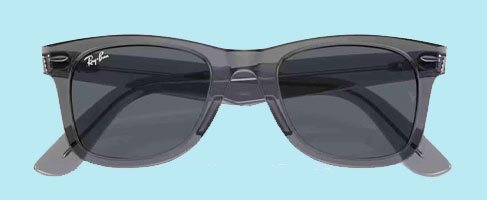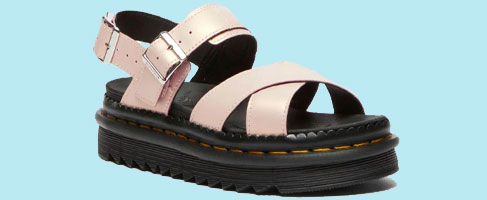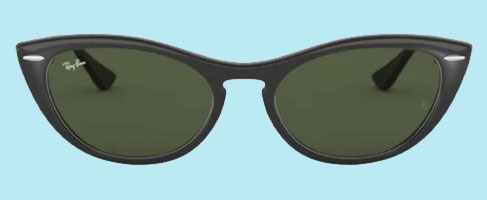A Brief History of Innocenti and Lambretta.
The Lambretta Story: A Tale Made in Italy!
We have a love for Italian. Heritage brands - Sergio Tacchini and Fila were both founded in Italy, making their name in ski and sportswear. Then more recently under WP Lavori's stewardship, the legendary Baracuta brand fostered it's own link to Italian style. All three brands are stocked in store and online at Atom Retro.
... and also for many years now we have stocked Lambretta Clothing. Casual mod clothing at a great price too.
Before the clothing came the scooters and we thought it would be nice to take a look at the famed two stroke, two wheeled Italian transport legend, Lambretta Scooters.
The name is derived from the word Lambarte, a suburb in Milan. The actual word Lambretta is purportedly named after the mythical water sprite associated with the Lambro river that runs through the Lambarte area.
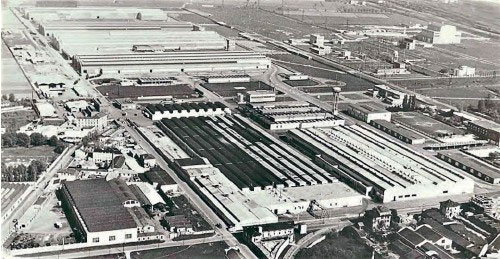
The huge Innocenti Works in Milan (Now defunct).
Lambretta was initially manufactured by Innocenti in Milan. Fernando Innocenti of Pescia, had originally built a steel tubing factory in Rome, before relocating to a new factory in Milan in 1931. The factory was bombed during WWII.
Fernando Innocenti recognised the important part that cheap transport would play in the rebuilding of post war Italy. Inspired by the US built Cushman Scooter (the famed Cushman 53 or Cushman Airborne), Innocenti set out his vision for designing a simple, robust and affordable vehicle. It had to be easy and practical to drive for men and women, be able to carry a passenger and protect clothes from getting dirty. Along with Piaggio, Innocenti mobilised a whole generation of Italians in the post war era.
Corradino D’Ascanio was given the job of designing the first Lambretta scooter. After a disagreement with Innocenti as to the method of manufacture, (Innocenti had assumed that the design should utilise rolled tubing allowing him to resurrect and leverage skills from his pre-war company), the pair parted company. Interestingly, D’Ascanio took his design to Enrico Piaggio who in 1946 (a year before Lambretta scooters appeared) produced the spar-framed Vespa. Aeronautical engineers Cesare Pallavicino and Pier Luigi Torre were tasked with taking over the design work for the Lambretta Scooter.
So, in October 1947, a year after Vespa, Lambretta unveiled their first production scooter, the Lambretta Model A. Although initially slow selling, production soon picked up and by the 7th month the factory were producing over 1,000 units per month. Lambretta scooters were manufactured under licence in many different countries. The most famous Lambretta scooters are those from Series 1-3 and in particular the Li models which were manufactured in volume between the years of 1958 and 1968 collectively. Jimmy’s scooter in Quadrophenia was a Lambretta Li150 Series 3. During filming, the registrations F suffix denoting 1967 was removed because the Film was actually set earlier.
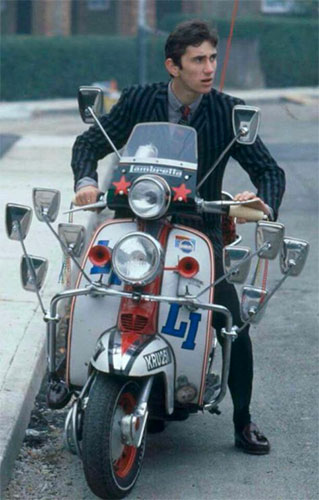
Phil Daniels as Jimmy Cooper on his Lambretta Li150 (Quadrophenia 1979).
As we are on the subject of Quadrophenia, let’s neatly step in to the part that Lambretta played in Britian’s 1960s subculture and conversely (and perhaps contentiously) the part that Britain played in the demise of Lambretta.
The cleanless and convenience of Lambretta scooters was in tune with the mindset of the fashion conscious modernists and mods. The enclosed engine, pass through leg area and front shield (weather protection) meant that the rider could wear their parka over their suit and arrive at a destination like they just stepped out of a taxi (perhaps not withstanding torrential rain!) Perfect for a dandified subculture that placed a premium on smartness of appearance! Mods and scooters have long being associated and even after the 1960s, both the Mod Revival era and to some extent, the 1990s Britop era helped preserve the long standing history between UK subcultures and the Lambretta scooter!
As individuals wealth increased during the 1960s, the demand for the scooter declined as the small car became more affordable to more people. Between 1961and 1976, Innocenti built under license The British Motor Corporation (BMC) and later The British Leyland Motor Corporation (BLMC) Mini and other models of car. With Innocenti’s financial status weakened by the loss of scooter sales and the crippling effect of strikes in 1969, not to mention the deepening of ties with BLMC, the deal to acquire the company by BLMC was eventually agreed in 1971. BLMC had been wanting a base in Europe to expand production and with Innocenti already having links with the company, BLMC had seemingly found the perfect set up and location.
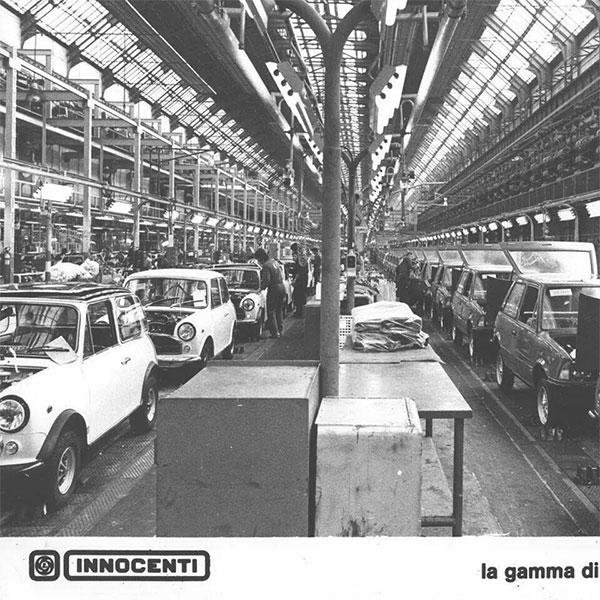
Innocenti Mini's under licence from BMC on the production line.
With the takeover complete, a review of the operations commenced. BLMC planned to ramp up car production and began to scrutinise other divisions to see if they were financially viable. Deeming the Lambretta scooter to be outdated and requiring a large investment in resources aand capital to make it viable again, the decision was made to cease production of the Lambretta. It is kind of ironic that there are similarities between Innocenti’s demise to the demise of BLMC itself – A combination of mis-management, lack of development and volatile economic conditions. In fact BLMC was. Itself defunct in entirety just 15 years later (andin truth it’s struggles had started much sooner).
The Indian Government bought the Lambretta machinery from the Milanese factory in 1972 creating Scooters India Ltd (SIL).
The Lambretta Consortium are behind the V-special Range of scooters that launched in 2017.











